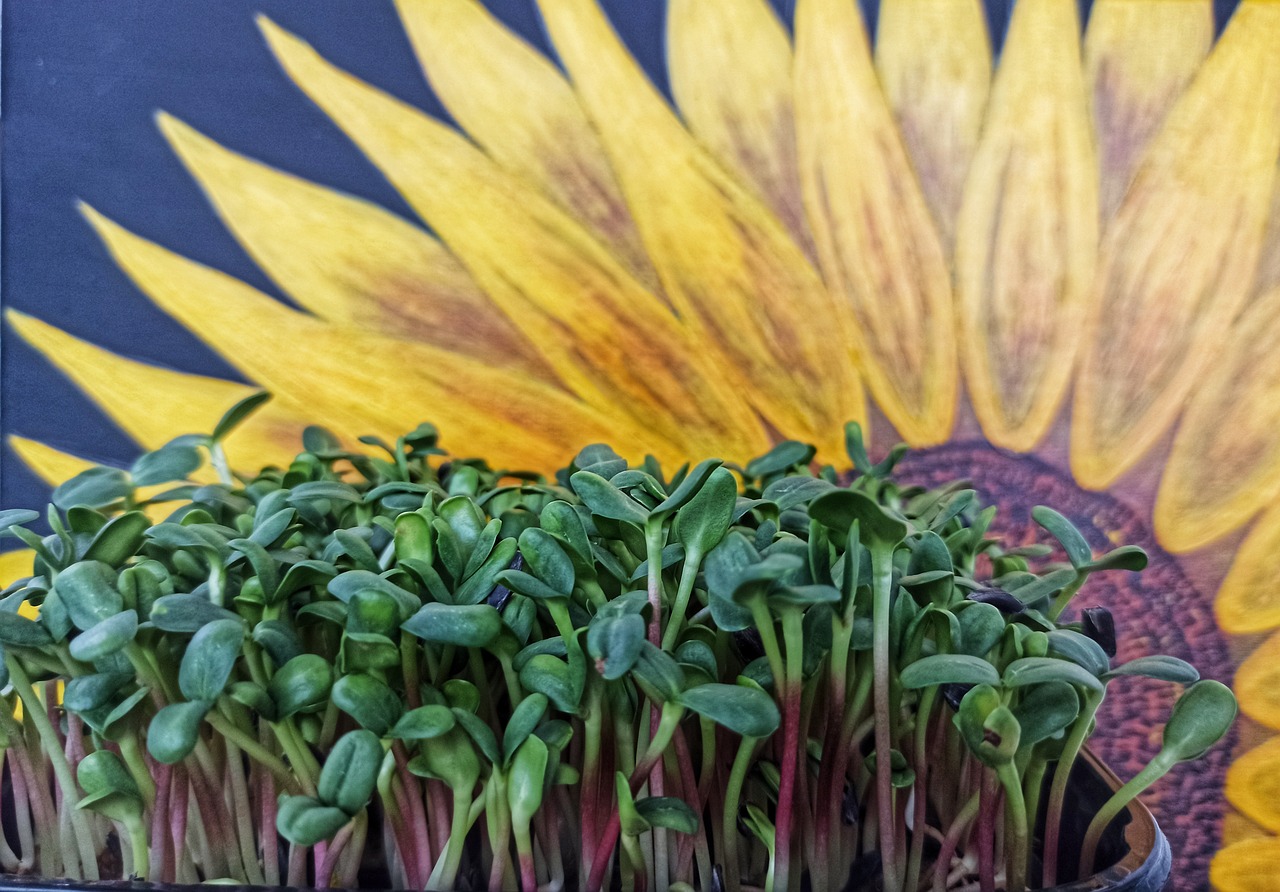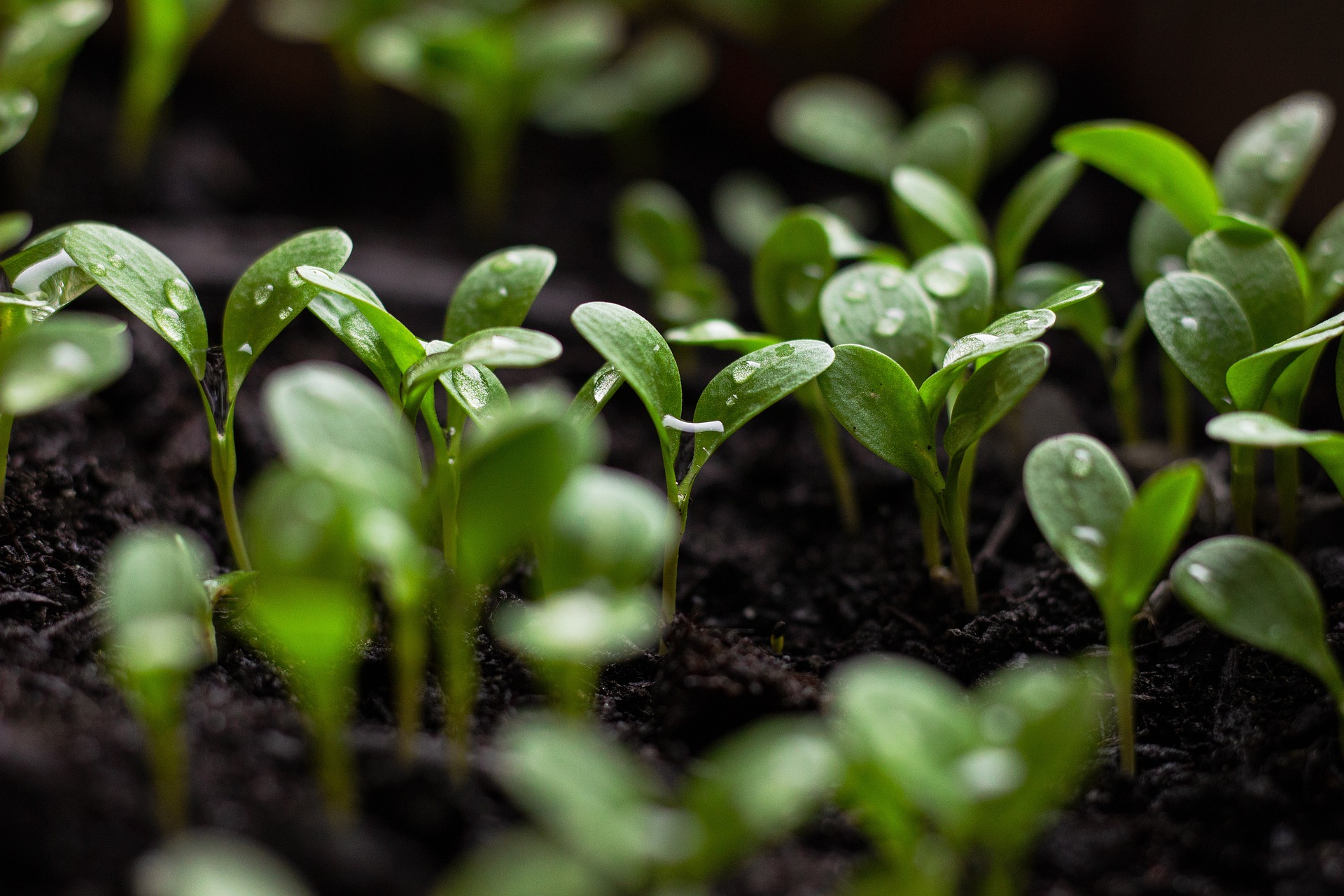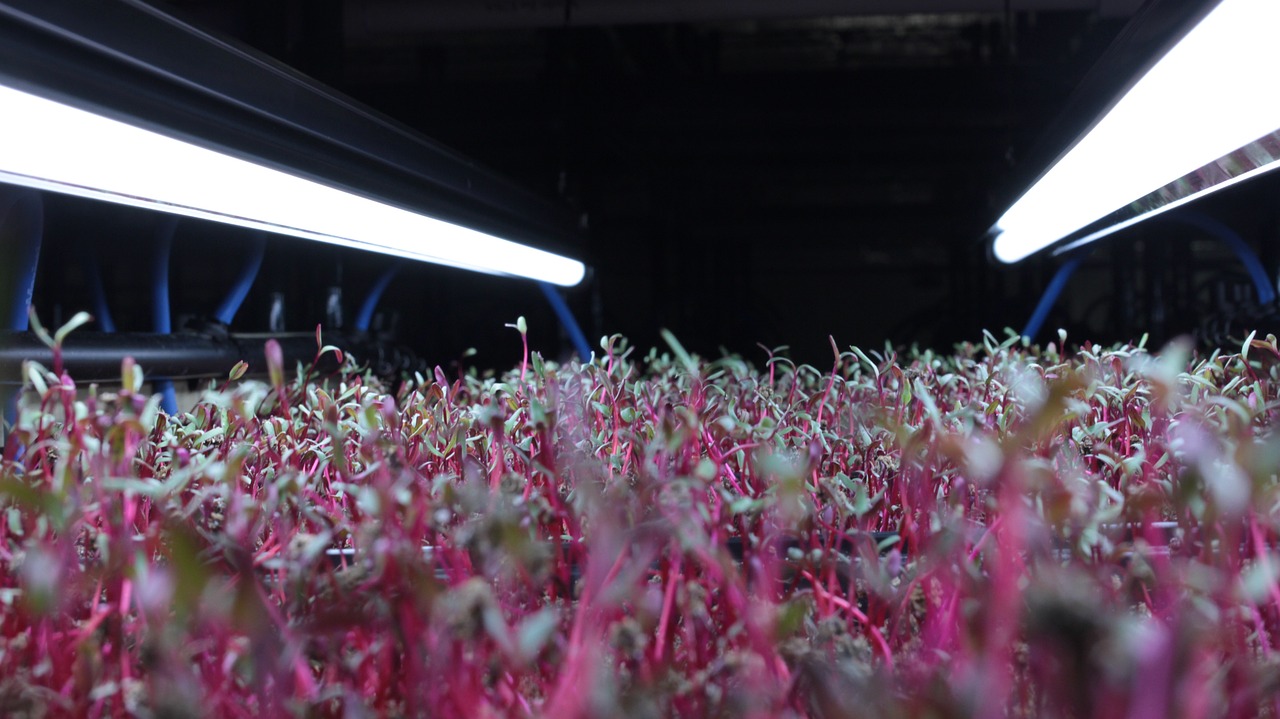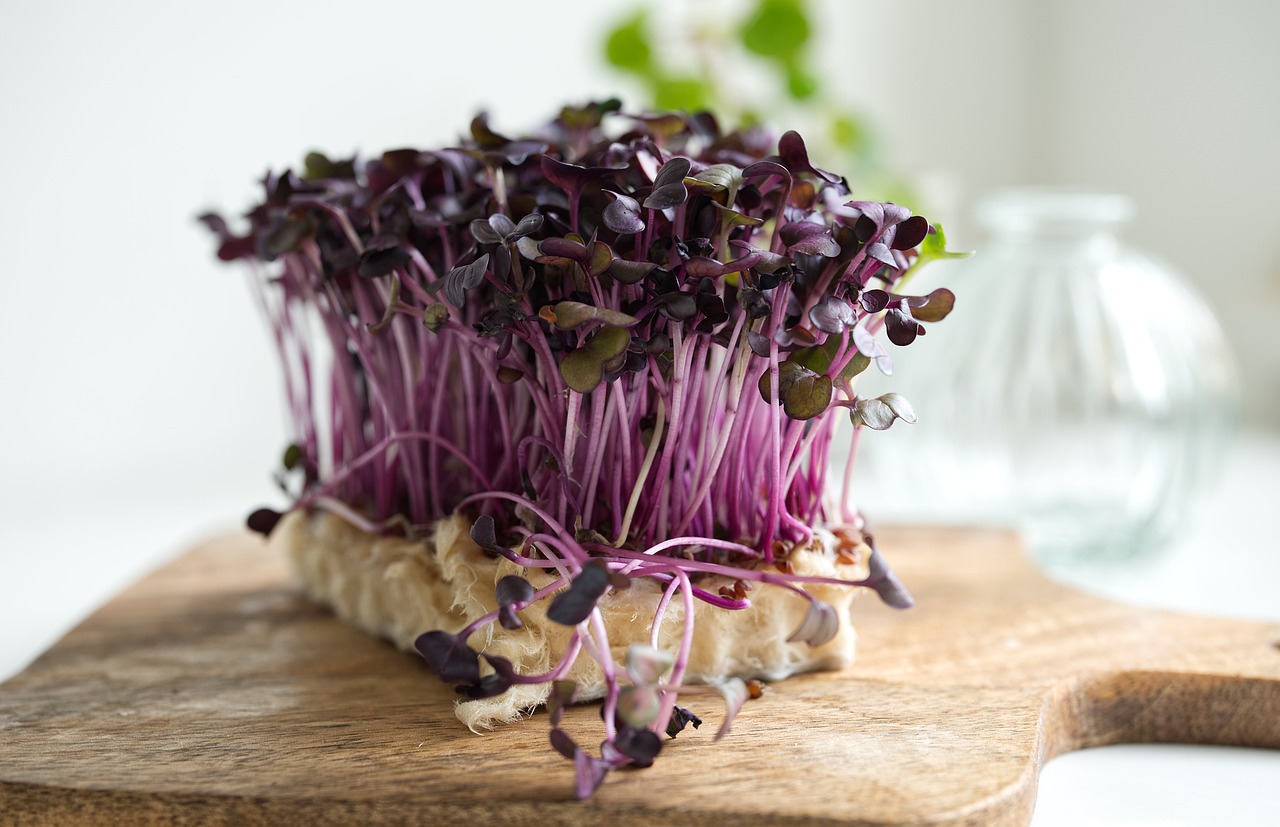The Remarkable Health Benefits of Microgreens As Nutritional Power
Microgreens, those vibrant, miniature versions of leafy greens and herbs, are more than just a culinary trend—they are nutritional powerhouses packed with a concentrated dose of essential vitamins, minerals, and antioxidants. Harvested at an early stage of growth, these tiny greens offer a myriad of health benefits that can positively impact heart health, cancer prevention, cognitive function, weight management, and overall well-being. In this comprehensive guide, we delve into the diverse nutritional profile of microgreens and explore their profound effects on human health.
The Nutrient-Rich World of Microgreens
Microgreens are young, edible greens that are harvested approximately 7-21 days after germination, just as their first true leaves emerge. Despite their small size, they boast an impressive nutritional profile, often containing higher levels of vitamins and minerals compared to their mature counterparts. For example, research has shown that red cabbage microgreens can contain up to 40 times more vitamin E and 6 times more vitamin C than their fully grown counterparts. Common microgreens such as broccoli, kale, and sunflower shoots are rich in vitamins K, C, and E, along with minerals like iron, potassium, and magnesium.
Enhancing Heart Health with Microgreens
One of the most significant health benefits of microgreens is their positive impact on heart health. Microgreens from the brassica family, such as broccoli and cabbage, are particularly beneficial due to their high levels of sulforaphane and polyphenols. These compounds have been linked to reduced cholesterol levels and a lower risk of heart disease. Studies have demonstrated that regular consumption of microgreens can improve cardiovascular function by lowering LDL (bad) cholesterol and triglyceride levels, thus promoting heart health and reducing the risk of cardiovascular diseases.

Microgreens: A Powerful Ally in Cancer Prevention
The potent antioxidant properties of microgreens make them effective in cancer prevention. Sulforaphane, abundantly found in broccoli and mustard microgreens, has been associated with the prevention of various types of cancer, including colon cancer. Additionally, the diverse array of polyphenols in microgreens can help inhibit cancer cell growth and protect against oxidative stress, a major contributor to cancer development. Regularly incorporating microgreens into your diet can provide valuable support in reducing the risk of cancer and promoting overall health.
Supporting Cognitive Function with Microgreens
Antioxidant-rich foods like microgreens can have a positive impact on cognitive function and brain health. Polyphenols, present in microgreens such as spinach and kale, have been shown to enhance cognitive abilities and protect against neurodegenerative diseases like Alzheimer's. By reducing inflammation and oxidative stress in the brain, microgreens can contribute to improved cognitive function and overall brain health. Including microgreens in your diet is a delicious way to nourish your brain and support long-term cognitive wellness.
Microgreens: A Key Ingredient in Weight Management
For individuals focused on weight management, microgreens offer a valuable addition to a balanced diet. These greens are low in calories but high in fiber, promoting satiety and supporting healthy digestion. Studies suggest that incorporating microgreens into meals can aid in weight management by reducing appetite, improving insulin sensitivity, and modulating gut microbiota. Whether used in salads, smoothies, or as a garnish, microgreens are a versatile and effective tool for those seeking to achieve and maintain a healthy weight.
How to Incorporate Microgreens into Your Diet
Now that we understand the incredible health benefits of microgreens, let's explore some creative ways to incorporate them into your daily meals:
- Salads: Add a generous handful of microgreens to your salads for an extra burst of flavor and nutrition.
- Smoothies: Blend microgreens like kale or spinach with fruits and yogurt for a nutrient-packed smoothie.
- Sandwiches and Wraps: Use microgreens as a fresh and nutritious addition to sandwiches and wraps.
- Garnish: Sprinkle microgreens over soups, omelets, or pasta dishes to enhance both taste and nutritional value.

How to Grow Microgreens at Home: A Step-by-Step Guide
Growing microgreens at home is a rewarding and simple process that allows you to enjoy fresh, nutrient-packed greens right from your kitchen. Follow this step-by-step guide to start growing microgreens at home:
1. Gather Your Supplies
Before you begin, gather the following supplies:
- Shallow trays or containers with drainage holes
- Potting mix or quality soil
- Microgreen seeds of your choice (e.g., broccoli, kale, radish)
- Spray bottle for watering
- Plastic wrap or a humidity dome (optional but helpful)
2. Prepare the Growing Container
- Fill your tray or container with potting mix or soil, leaving about 1-2 inches of space from the top.
- Gently pat down the soil to create a smooth, even surface for planting.
3. Sow the Seeds
- Sprinkle the microgreen seeds evenly over the soil surface. Strive for a compact arrangement of seeds that is full but not too crowded.
- Lightly press the seeds into the soil or cover them with a thin layer of additional soil to ensure good seed-to-soil contact.
4. Water and Provide Moisture
- Use a spray bottle to mist the seeds with water until the soil is evenly moist.
- For optimal germination, cover the tray with plastic wrap or a humidity dome to retain moisture. This step is optional but can promote faster and more successful seed germination.
5. Provide Proper Lighting
- Place the tray in a location with indirect sunlight or under grow lights. Microgreens require good light for healthy growth.
- Avoid placing them in direct sunlight, as this can cause the soil to dry out too quickly or overheat the young plants.
6. Monitor and Water Regularly
- Check the soil moisture daily and mist with water as needed to keep it consistently moist.
- Make sure not to use too much water, as this could cause mold or fungi to grow. Try to keep the soil moist but not overly wet.
7. Harvesting Microgreens
- Microgreens are ready to harvest in about 7-21 days, depending on the variety.
- Use scissors to cut the microgreens just above the soil line when the first true leaves appear. Harvesting at this stage ensures optimal flavor and nutrition.
8. Enjoy Your Homegrown Microgreens
- Rinse the harvested microgreens gently and use them immediately in salads, sandwiches, smoothies, or as a garnish for various dishes.
- Store any leftover microgreens in the refrigerator for a few days in a sealed container lined with paper towels to maintain freshness.
By following these simple steps, you can cultivate your own supply of fresh and nutritious microgreens year-round. Experiment with different seed varieties and enjoy the satisfaction of growing your own vibrant greens right at home!

Fast-Growing Microgreens and Their Nutritional Benefits
Microgreens are young, nutrient-dense greens that germinate and mature quickly, making them ideal for home cultivation. Here's a list of 15 fast-growing microgreens along with their nutritional profiles:
1. Radish (Raphanus sativus)
- Days to Harvest: 5-7 days
- Nutrition: Rich in vitamin C, folate, potassium, calcium, and phosphorus. Provides antioxidants and dietary fiber.
2. Broccoli (Brassica oleracea)
- Days to Harvest: 7-10 days
- Nutrition: High in vitamin C, vitamin K, antioxidants (including sulforaphane), iron, calcium, and fiber.
3. Arugula (Eruca sativa)
- Days to Harvest: 7-10 days
- Nutrition: Good source of vitamin K, vitamin C, folate, calcium, magnesium, and potassium.
4. Kale (Brassica oleracea) - Red Russian Variety
- Days to Harvest: 8-12 days
- Nutrition: Rich in vitamin K, vitamin A, antioxidants, calcium, iron, and fiber.
5. Cilantro (Coriandrum sativum)
- Days to Harvest: 7-14 days
- Nutrition: Contains vitamin A, vitamin C, antioxidants, potassium, and manganese.
6. Mustard (Brassica juncea)
- Days to Harvest: 5-7 days
- Nutrition: High in vitamin K, vitamin C, folate, calcium, iron, and potassium.
7. Chia (Salvia hispanica)
- Days to Harvest: 7-10 days
- Nutrition: Excellent source of omega-3 fatty acids, fiber, protein, calcium, magnesium, and phosphorus.

8. Basil (Ocimum basilicum)
- Days to Harvest: 7-10 days
- Nutrition: Contains vitamin K, vitamin A, antioxidants, calcium, iron, and magnesium.
9. Beet (Beta vulgaris)
- Days to Harvest: 10-14 days
- Nutrition: Rich in vitamin C, iron, antioxidants, folate, manganese, and potassium.
10. Spinach (Spinacia oleracea)
- Days to Harvest: 7-10 days
- Nutrition: High in vitamin K, vitamin A, antioxidants, iron, magnesium, and potassium.
11. Swiss Chard (Beta vulgaris var. cicla)
- Days to Harvest: 7-10 days
- Nutrition: Rich in vitamin K, vitamin A, antioxidants, calcium, magnesium, and potassium.
12. Sunflower (Helianthus annuus)
- Days to Harvest: 7-10 days
- Nutrition: Good source of vitamin E, essential fatty acids, protein, iron, magnesium, and zinc.
13. Pea (Pisum sativum)
- Days to Harvest: 7-10 days
- Nutrition: Rich in vitamin C, vitamin A, protein, iron, potassium, and fiber.
14. Lettuce (Lactuca sativa)
- Days to Harvest: 7-10 days
- Nutrition: Contains vitamin A, vitamin K, antioxidants, folate, potassium, and manganese.
15. Celery (Apium graveolens)
- Days to Harvest: 7-10 days
- Nutrition: Rich in vitamin K, vitamin C, antioxidants, folate, potassium, and calcium.
These fast-growing microgreens offer an array of flavors and textures while providing essential nutrients necessary for overall health and wellness. Experiment with these varieties to create delicious and nutritious dishes right from your home garden!
Feel free to use this information to explore growing these quick and nutritious microgreens at home. Experiment with different varieties to enjoy their unique flavors and health benefits!
Conclusion: Embracing the Microgreen Revolution
In conclusion, microgreens are not only visually appealing but also offer a multitude of health benefits that can transform your well-being. By incorporating microgreens into your daily diet, you can boost your intake of essential nutrients, support heart health, reduce cancer risk, enhance cognitive function, and manage weight effectively. Whether you choose to grow microgreens at home or purchase them from local markets, these tiny greens are a simple and delicious way to harness nature's nutritional power and optimize your health. Embrace the microgreen revolution today and reap the benefits of these extraordinary superfoods!

Frequently Asked Questions (FAQs) About Microgreens and Their Health Benefits
1. What are microgreens?
Microgreens are young, edible greens that are harvested at an early stage of growth, typically 7-21 days after germination. They are miniature versions of leafy greens and herbs, known for their vibrant colors, intense flavors, and concentrated nutrient content.
2. What nutrients do microgreens contain?
Microgreens are nutritional powerhouses, containing a rich array of vitamins, minerals, and antioxidants. They are particularly high in vitamins K, C, and E, as well as essential minerals like iron, potassium, and magnesium. Compared to their mature counterparts, microgreens often have higher nutrient densities.
3. How do microgreens benefit heart health?
Microgreens, especially varieties from the brassica family such as broccoli and cabbage, contain compounds like sulforaphane and polyphenols that have been shown to promote heart health. These compounds can help lower cholesterol levels, reduce inflammation, and support cardiovascular function, ultimately lowering the risk of heart disease.
4. Can microgreens help prevent cancer?
Yes, microgreens are rich in antioxidants, including sulforaphane and various polyphenols, which have potent anticancer properties. Regular consumption of microgreens may help inhibit the growth of cancer cells and protect against oxidative stress, reducing the risk of certain types of cancer such as colon cancer.
5. How do microgreens support cognitive function?
The antioxidant-rich nature of microgreens, particularly the presence of polyphenols found in varieties like spinach and kale microgreens, can benefit cognitive function and brain health. These antioxidants help combat oxidative stress and inflammation in the brain, contributing to improved cognitive abilities and potentially reducing the risk of neurodegenerative diseases like Alzheimer's.
6. Are microgreens beneficial for weight management?
Yes, microgreens are an excellent addition to a weight management diet. They are low in calories but high in fiber, promoting satiety and supporting healthy digestion. Incorporating microgreens into meals can help reduce appetite, improve insulin sensitivity, and aid in weight management efforts.

7. How can I incorporate microgreens into my diet?
There are numerous creative ways to incorporate microgreens into your diet:
- Add them to salads for added texture, flavor, and nutrition.
- Blend them into smoothies with fruits and yogurt for a nutrient-packed beverage.
- Use them as a fresh garnish for soups, sandwiches, or wraps to enhance both taste and visual appeal.
- Incorporate them into omelets, stir-fries, or pasta dishes for an extra boost of vitamins and minerals.
8. Are all types of microgreens safe to eat?
While most microgreens are safe for consumption, individuals with specific allergies should be cautious and avoid microgreens from allergenic plant species. If you have concerns about allergies or adverse reactions, consult with a healthcare professional before incorporating new foods into your diet.
9. Can I grow microgreens at home?
Yes, growing microgreens at home is easy and requires minimal space and equipment. You can use shallow trays, potting soil, and seeds to cultivate microgreens indoors. They grow quickly and can be harvested within a few weeks, providing you with a fresh and sustainable source of nutritious greens.
10. Where can I find microgreens?
Microgreens are increasingly available at grocery stores, farmers' markets, and specialty food stores. You can also grow them at home for a cost-effective and convenient supply of fresh greens year-round.
Explore the world of microgreens and discover how incorporating these nutrient-packed greens into your diet can benefit your overall health and well-being. Experiment with different varieties of microgreens and enjoy their exceptional flavors while reaping their remarkable health benefits!
Powered by Froala Editor





Leave a Reply